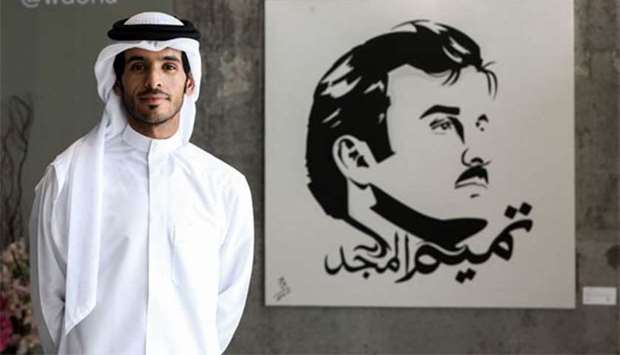A young Qatari artist has shot to stardom with a sketch of His Highness the Emir -- now the emblem of Qatari nationalism.
The sketch of His Highness the Emir Sheikh Tamim bin Hamad al-Thani is everywhere, thanks to a silhouette of his profile and the slogan "Tamim al-majd" -- "Tamim the Glorious" -- on bumpers, shop windows, concrete walls and mobile phone cases.
"I have no words to describe what I feel when I see my illustration everywhere," says Ahmed al-Maadheed, who created his design hours after Saudi Arabia, the United Arab Emirates, Bahrain and Egypt cut ties with Qatar on June 5.
"It's a gift from God to have the honour to draw his majesty's portrait and have it become a symbol", al-Maadheed told AFP in Doha.
Al-Maadheed posted a portrait of the Emir, sketched hastily in black and white immediately after Saudi Arabia and its allies announced the sanctions against Qatar, to his personal Twitter and Instagram accounts.
The Emir's profile, and the line "Tamim the Glorious" in intricate Arabic calligraphy, spread like wildfire in Qatar after a retweet by the Emir's brother, finding its way into the streets as posters, stickers, flags and even jewellery.
The design also resurfaced as a graffiti stencil, frequently painted in black and accompanied by the red-and-white Qatari flag.
The success of "Tamim the Glorious" propelled the then-unknown artist into the limelight overnight, and by the end of June he had exhibited his work at an annexe of Qatar's art museum and one of Doha's top hotels. Nearly all the paintings sold that month.
Al-Maadheed's paintings are frequently patriotic, featuring portraits of the royal family and even Turkish President Recep Tayyip Erdogan.
"I draw inspiration from my culture, from nature ... but also from well-known figures", al-Maadheed said.
The emblem of the Emir has since been translated to English for the country's sizeable expatriate community, and stickers and banners in English are now visible across Doha.
Al-Maadheed, who runs an advertising agency, said he had been offered $10mn for the original Arabic design by a private party, but opted instead to gift it to the Emir.
"I'm thankful God gave me the chance to create this sort of work ... which expresses my love for the Emir," al-Maadheed said.

Qatari artist Ahmed al-Maadheed stands next to his painting of His Highness the Emir Sheikh Tamim bin Hamad al-Thani at a gallery in Doha.
